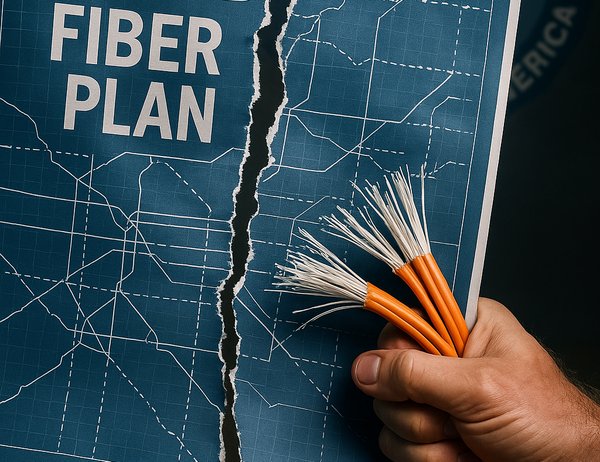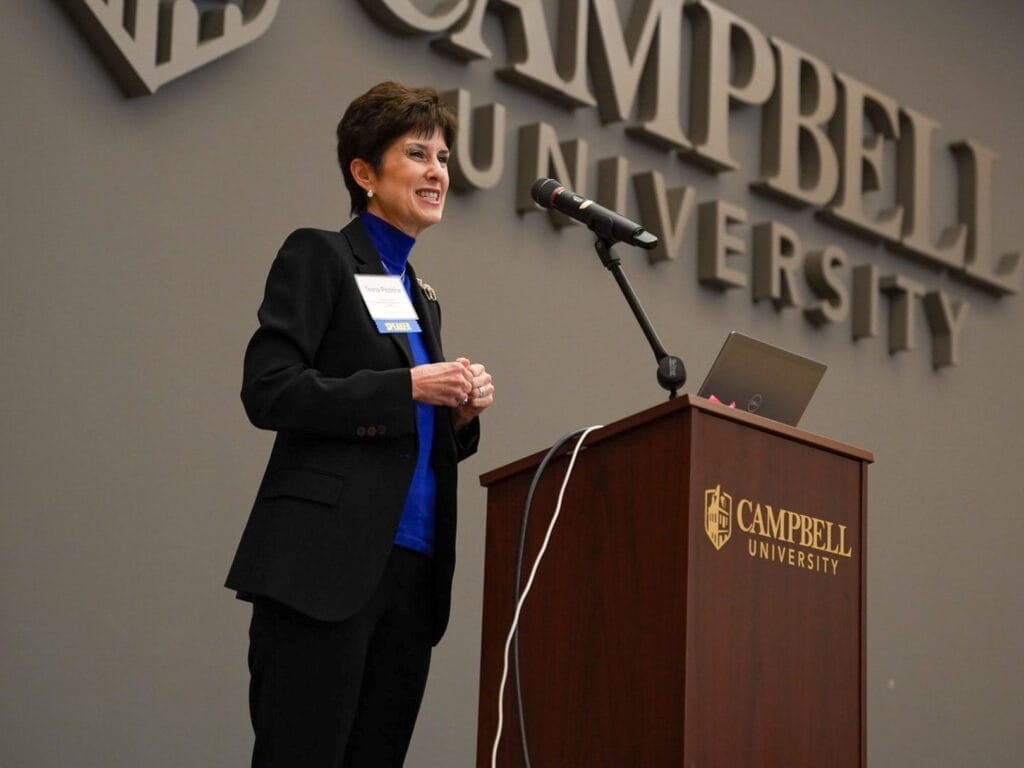## Is your internet connection about to become your virtual battleground?
The world of gaming is changing, and it’s not just about faster graphics or more immersive storylines. The very fabric of how we connect and play is being rewritten, and at the heart of this revolution is a concept called “tech-neutrality.”

Enter J. Randolph Luening, tech policy expert and advocate, who’s tackling this complex issue head-on in a recent Broadband Breakfast article. Luening dives deep into the implications of tech-neutrality for BEAD, the infrastructure funding program designed to bring high-speed internet to underserved communities.

Fiber-Optic Networks: The Gold Standard for Gaming Connectivity

For gamers, a seamless and exhilarating online experience hinges on lightning-fast internet speeds, ultra-low latency, and a robust network capable of handling demanding data traffic. Fiber-optic networks, renowned for their unmatched speed, reliability, and capacity, stand as the ideal infrastructure to meet these critical requirements.
Fiber optics transmit data as pulses of light through thin glass strands, enabling significantly faster data transfer rates compared to traditional copper cables. This translates to virtually lag-free gameplay, enabling split-second reactions and a competitive edge. The high bandwidth capacity of fiber networks also ensures smooth streaming of high-definition graphics and eliminates buffering issues, even during intense multiplayer sessions.
Furthermore, fiber optic networks are inherently more reliable than copper-based infrastructure, less susceptible to interference and signal degradation. This stability is crucial for online gaming, where even brief interruptions can disrupt gameplay and impact performance.

Existing Fiber Infrastructure: A Strong Foundation
The existing fiber infrastructure in urban and suburban areas provides a solid foundation for widespread fiber deployment. Major cities and densely populated regions already boast extensive fiber networks, serving as a natural starting point for expanding fiber coverage to underserved communities.
Leveraging this existing infrastructure allows for efficient and cost-effective expansion, minimizing the need for costly trenching and installation of new fiber lines. This focus on optimizing existing infrastructure can accelerate the rollout of fiber connectivity, bringing high-performance internet to more gamers faster.
Meeting the Demands of Future Technologies
The future of gaming is pushing the boundaries of technology, with emerging trends like 5G and immersive gaming experiences demanding even greater bandwidth and lower latency. Fiber’s robust capabilities make it the optimal solution for these next-generation technologies.
5G networks, capable of delivering significantly faster data speeds and reduced latency, rely heavily on fiber backhaul to handle the massive data traffic generated by connected devices. Without a robust fiber backbone, the full potential of 5G cannot be realized, hindering the adoption of advanced gaming features.
Similarly, immersive gaming experiences, such as virtual reality (VR) and augmented reality (AR), require high-bandwidth connections to seamlessly stream high-resolution visuals and respond to player input in real-time. Fiber’s exceptional speed and low latency ensure a truly immersive and responsive gaming experience.
Alternative Technologies: Strengths and Limitations
While fiber optics offer the most compelling solution for high-performance gaming connectivity, alternative technologies like fixed wireless and satellite internet also play a role in bridging the digital divide. However, these alternatives present limitations that may hinder their ability to fully meet the demands of gamers.
Fixed Wireless Networks: Speed and Deployment
Fixed wireless networks leverage existing cellular infrastructure to deliver broadband internet access wirelessly. This technology offers faster deployment compared to fiber, as it does not require extensive trenching and cable laying. However, fixed wireless networks face challenges in terms of speed and reliability, particularly in areas with dense foliage or geographical obstructions.
While fixed wireless can provide decent download speeds, upload speeds often lag behind fiber, which can impact online gaming performance. Latency, the delay between sending and receiving data, can also be higher with fixed wireless, leading to noticeable lag in online games.
Satellite Internet: Coverage vs. Latency
Satellite internet offers coverage in remote areas where other broadband technologies are unavailable. However, the significant latency inherent in satellite communication poses a major challenge for online gaming. Signals travel vast distances to and from satellites, resulting in a noticeable delay in response times, making real-time gameplay difficult.
While satellite internet has improved in recent years, latency remains a significant barrier for gamers seeking a competitive edge. The high latency can result in missed shots, delayed reactions, and a frustrating gaming experience.
Hybrid Approaches: A Potential Solution
A hybrid approach, combining fiber with fixed wireless or satellite, may be the most practical solution in many cases. Fiber can provide high-speed, low-latency connectivity in populated areas, while fixed wireless or satellite can extend coverage to more remote locations.
This blended approach leverages the strengths of each technology, offering a more comprehensive and adaptable broadband solution. By strategically deploying these technologies, policymakers and service providers can ensure broader access to high-quality internet connectivity, ultimately benefiting gamers and other internet users alike.
Implications for Gamers: Tech Neutrality and the Future of Gaming
The shift toward tech neutrality in broadband policy has significant implications for gamers, potentially leading to both opportunities and challenges. While tech neutrality aims to foster competition and innovation in the broadband market, gamers must remain vigilant in advocating for robust fiber deployment to ensure a truly immersive and competitive gaming experience.
Competitive Broadband Market and Service Quality
Tech neutrality could lead to a more competitive broadband market, potentially driving down prices and improving service quality. Service providers will be incentivized to offer attractive packages and compete for customers, leading to better value for gamers.
However, this competition needs to extend to fiber deployment. Gamers should encourage policymakers to prioritize fiber infrastructure as a key component of broadband expansion, ensuring that competition doesn’t come at the expense of high-performance connectivity.
Advocating for Fiber-First Solutions
Gamers should actively advocate for fiber as the preferred technology for broadband deployment. While alternative technologies may have their place, fiber remains the gold standard for gaming connectivity, offering the speed, reliability, and capacity required for a truly immersive experience.
Gamers can engage with policymakers, support organizations advocating for fiber deployment, and make their voices heard in public consultations to ensure that fiber remains a priority in broadband policy decisions.
The Future of Gaming Relies on Fiber
The future of gaming relies on high-speed, low-latency internet, making fiber a crucial investment for a truly immersive experience. As gaming technology continues to advance, the demand for fiber-optic connectivity will only grow, and gamers must play an active role in shaping the future of their favorite pastime.
By understanding the benefits of fiber and advocating for its widespread deployment, gamers can ensure that they have access to the connectivity they need to enjoy the latest and greatest gaming experiences.
Conclusion
So, where does this leave us in the grand scheme of broadband access? J. Randolph Luening’s call for tech-neutrality in the BEAD program shines a critical light on the potential pitfalls of prioritizing specific technologies over others. While the goal of bridging the digital divide is undeniably noble, blindly favoring one technology over another could stifle innovation and ultimately harm the very communities BEAD aims to serve.
The future of broadband access hinges on our ability to remain flexible and adaptable. As technology evolves at a breakneck pace, clinging to a single solution risks becoming obsolete. By embracing tech-neutrality, BEAD can foster a competitive market that drives innovation and delivers the most effective and equitable broadband solutions to all Americans. This isn’t just about choosing the “right” technology; it’s about empowering communities to choose the technologies that best suit their unique needs and circumstances. The road to universal broadband access isn’t paved with a single solution, but with the promise of diverse, adaptable, and ultimately empowering choices.
Let’s ensure that the BEAD program doesn’t just connect communities to the internet, but empowers them to shape their own digital futures.